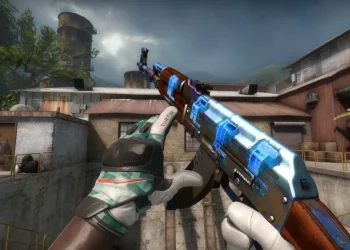As a developer, having a soft launch for your mobile game is one of the best ways to prepare your game for a global launch. The soft launch of your game allows developers to collect data and find bugs. You can also get initial player feedback.
Also, a soft launch allows you to test your database server and make sure it can handle the load of a global release.
For free-to-play games, it’s critical to assess global performance, retention, and revenue potential. This is particularly true for those with in-game purchases.
Knowing all these will tell you if your game is profitable and worth launching globally or not.
Below, we listed down the things that could make the launching of your mobile game a success.
Know Your Goal
First on the list is, of course, identifying your goal. What do you want to achieve in launching this mobile game? The answers will allow you define all the stages and the length of your soft launch in advance.
Market Research
This method is the process of looking into the game market with figures, facts, and views. It’s all about figuring out how to combine what people want with what you want to do.
It will tell you what people prefer to play these days, what you can develop, and why people buy your game. So many people have attempted market research and failed. That’s okay.
This phase would give you an idea of what to expect while you work on your game. Also, you will learn about the main challenges you will face in development and marketing.
In a game, audience values are essential. What are the names of other apps/games? Are they harmonious? Which demographics are they aiming for? For which keywords do they have a high ranking? Who wants to play a mobile game like this? Do they have any extra cash? Are they social or competitive? Is there a large number of people?
Doing a qualitative data analysis can help in placing your game in front of the correct people.
Analyze Your Target Audience
This step is vital to the achievement of any mobile game launch. You must first choose who you want to reach, where you would like to target the audience, and why. It is not the type of situation where you must make an intelligent guess.
Defining your target audience for the launch of your first game might be difficult. There isn’t any data to go on. Yet, figuring out what makes your game unique is a terrific place to start. So is knowing who would like to play it.
Start by defining the basics. These include your target audience’s age, location, and gender, for both a hard and soft launch. Then get much more precise: are you aiming for a casual or a mid-core audience?
Know your target audience’s interests and motives even further. One of the main reasons gamers play mobile games is to express themselves. They also want to experience various emotions.
Others are also driven by the desire to achieve a high degree of skill and outperform their peers.
Identify Your Budget and Timeline
Establishing what you want to track, analyze, or change before commencing your soft launch is vital.
You must define these two factors. They will allow you to estimate the expenses of a soft launch and handle the game’s production team.
You will use the budget set up for acquisition to get users. It will also determine the number of users required to gather data for KPI analysis.
– What is the least number of users I need to recruit?
– Whose country and, as a result, which CPI?
– How long?
Furthermore, a specific calendar defining the launch steps, revisions, among others, is necessary. It will specify the time frame of a soft launch.
More iterations are also required than planned. A soft launch usually takes longer than projected. Even so, it’s critical to create a plan and a schedule ahead of time. A soft launch phase generates almost no revenue. Also, the manufacturing and acquisition costs could be high.
Creative Advice
Many businesses believe that soft launches are low-maintenance and need little care. But, your creatives will influence your place in the cascade of competitors.
Creatives perform with different networks and platforms as general guidance. You must know this. What works on Facebook may or may not work on a video advertising network or with Google UAC. It won’t likelysucceed because of the nature of ad placements or how consumers interact with them.
Ad partners’ benchmarks for each ad type and ad placement are critical when improving creatives. It is about the eCPM (effective cost per thousand impressions) you produce for publishers and networks. Your eCPM determines your position in the competitive cascade.
Sure, unlimited bids could raise eCPM. Advertisers do it often. Using optimized creatives, you may bid up the cascade. Enjoy it.
Partner With Affiliates to Promote Your Mobile Game
Look for influencers, like media connections and social media influencers with large followings. You can pay them to promote your game. Give them a unique URL that tracks sales or downloads. This way, they can get paid right away if their audience takes the appropriate action.
Improve App Store Optimization (ASO) Before Launching Your Mobile Game
Test and optimizing your game store’s website should be part of your plan. Focus on your ASO before commencing a soft launch.
ASO, or App Store Optimization, is where you optimize your page store on iOS and Android. It is a crucial component that you must not miss. Below are a couple of reasons why improving your ASO is vital:
– It enables you to convert the most significant number of visitors to your store page.
– It helps to optimize the acquisition expenses of your advertising campaigns. You can do this by encouraging as many users as possible to download your game after clicking on your ad.
A 5% to 15% conversion rate on an app store page shows a significant increase in the number of installations. It can also tell you about associated expenditures.
A soft launch for your mobile game is the ideal opportunity to test and manage many versions of your store page. For example, logo, title or subtitle, screenshots, and description may all be A/B tested.
Then, you have to analyze your app store page’s conversion rates. There are several ways to do this.
You must then examine the conversion rates on your mobile game page. You can achieve it in a variety of ways.
1. To test your Android page, use the Google Store Listing Experiments tool. It is free and available on the Developer Console.
This tool allows you to A/B test store pages on a specific audience and tracks conversion rates for each test. Any app publisher should use this powerful feature. It offers exact A/B tests as well as integrated fast learning. On iOS, you can also share insights.
2. Analyze soft launch user conversion rates (installs/clicks).
Less precise and informative than the Store Listing Experiments. It implies testing on the same audience twice: twice on different store pages.
– Its precise targeting makes Facebook the best source for testing.
– Only on Facebook News Feed (not stories). You need an ISO. So, for instance, Facebook’s Audience Network has varied (CVRs).
– Select an identical affinity target for both tests. Avoid clones. Focus on interests.
– Same campaign (bidding, socio-demo). If possible, use the same design and format between tests. Test both static and video creative to see how they perform.
- Do A/B testing of your store pages with specialized (and paid) services. They will provide a fine and extensive analysis available from several suppliers.
Have a Launch Party
It is not necessary to throw a large launch celebration. In reality, you may use a webinar to host a small, personal digital launch party. Invite early adopters, tech journalists, influencers, and others to a brief launch event.
Provide your guests with the specific information needed to download your mobile game. You can also spread the news while announcing special live discounts or perks.
Monitor Feedback and Encourage Reviews
Finally, you should keep track of user comments on your game. Then, encourage these users to provide reviews.
This method would not only help you uncover bugs you wouldn’t otherwise know about. It will also help you make rapid changes to enhance the user experience and make your app stick.
Is your mobile game ready to launch this year? Follow the simple steps above to ensure that you’ve covered all your bases for your launch. While doing this, you can also ensure that you’ll be able to keep users around for the long haul.






